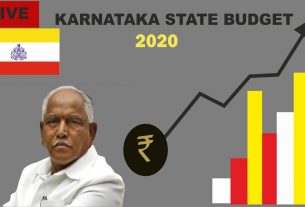India is estimated to generate 200,000 tonnes of waste by 2030 and around 1.8 million tonnes by 2050 – almost 200 times the weight of the Eiffel Tower.
Sun’s rays fall directly on the Tropic of Cancer throughout the year. India being one of the countries on the line, receives abundant sunlight. India has a mission dedicated to utilize this naturally bestowed resource. However, it does not have a policy for regulating solar waste management.
A recent report by renewable energy consulting firm Bridge to India (BTI) said that the solar photovoltaic (PV) panels’ waste volume in India is estimated to grow to 200,000 tonnes by 2030 and to around 1.8 million tonnes by 2050 – almost 200 times the weight of the Eiffel Tower.
Currently, solar waste is either dumped in landfills, sold as scrap, or treated as electronic waste, which is harmful to the environment as it contains toxic metals and minerals that may seep into the ground. The entire purpose of using renewable energy and turning towards cleaner energy is defeated due to this as it is adding to the waste and causing lasting environmental concerns.
“Solar energy became popular only in the year 2009-10; the panels that were installed during that time have lived most of their lives and will be discarded in a few years. The amount of waste that many plants will be generating will be huge and if India doesn’t come up with a waste management policy right now, we won’t be able to handle the waste at the end of the moment,” said Ayush Shukla, manager at the National Solar Energy Federation of India (NSEFI).
Green Energy tag, not justified
Solar energy is a type of renewable energy which is considered cleaner and environmentally friendly. Many experts say that the advantages of using solar power are numerous, but if the policy for waste disposal is not enforced, the ‘green energy’ tag becomes unjustifiable.
“Bangalore does not have any separate center for recycling or disposal of solar waste,” said Vinod, owner of V1 Energy, a solar energy equipment supplier. “If there is less waste, they usually dump it like regular waste, and if there is a huge amount, they send it to the scrap centers.”
He also said that he doesn’t prefer recycling because it is very expensive to discard them and manufacturing new panels is cheaper than recycling them.
Most solar recycling plants only remove silver and copper from the cells. They burn the glass and plastic casings in cement ovens to recycle them. Incineration (burning) releases toxins and greenhouse emissions into the environment.“Since the process is expensive and time-consuming, companies find it better to dispose of the dead panels in landfills or export them to third-world countries,” explained Poorna Khanna, an environmentalist.
The bigger issue is the lack of proper space, infrastructure, technology, and regulations for the proper management of imported waste in developing countries. The potential leaching of these metals into the surrounding environment (soil, air, and water) poses a major public health risk.
“Studies have shown that heavy metals in solar panels, including lead and cadmium, can infiltrate the groundwater, as well as affect plants. These metals also have a record of harmful effects on human health. “Lead can impair brain development in children, and cadmium can cause cancer,” Khanna added.
Policy Measures & Solutions
“Only Europe has an effective solar waste management policy as of now.“The Ministry of Renewable Energy has guided the NSEFI to draft a policy that can be published in coming years,” Shukla said. He added that a policy should be made as soon as possible.
Other than the installed solar panels whose lives get over, many get destroyed in logistics, procurement, installation, or in natural disasters. Currently, all the waste is not being tackled properly.
Other countries like theUK, China, and Japan have certain provisions and have started taking steps in the right direction. Khanna said, “India stands way behind as we do not cover solar module waste under the current E-Waste Management Rules, 2016. We need a directive that defines a strong framework with ‘Ultimate Producer Responsibility’ that accounts for the responsibilities of all possible stakeholders- from manufacturers to the end-users.”
Khanna also said that the producers, distributors, retailers, recyclers, and dismantlers need to take care of their role in managing the waste. “We need more recyclers with cutting-edge that can optimize the recycling efficiency to more than 95 percentas these modules are a storehouse of numerous precious and high-end metals.”
India is not a major manufacturer of solar panels since most of them are manufactured abroad and are primarily only assembled in India. 80 percent of panels are imported from China and other countries. NSEFI mentioned in their report that the producer should be responsible for recycling the waste solar panels. Many times, producers like Vinod don’t take responsibility for recycling the waste panels as it is a hefty expense.
Solar Energy Mission
Solar energy is a crucial part of India’s National Action Plan for climate change, with the National Solar Mission being one of the key missions. India has ambitious solar power goals but no proper policy or mechanism for the disposal of solar waste.
The National Institute of Solar Energy has assessed the country’s solar potential of about 748 GW assuming three percent of the wasteland area is covered by Solar PV modules.
The National Solar Mission (NSM) was launched on Jan. 11, 2010. The NSM is an initiative taken by the Government of India involving participants from all states to promote sustainable energy while addressing the challenges our country faces with energy. It will also contribute to the global efforts being taken for climate change.
The Mission’s objective is to establish India as a global leader in solar energy by creating the policy conditions for solar technology diffusion across the country as quickly as possible. The Mission targets installing 100 GW of grid-connected solar power plants by the year 2022. The target is in line with India’s Intended Nationally Determined Contributions (INDCs) target to achieve about 40 percent of cumulative electric power installed capacity from non-fossil fuel-based energy resources. It also plans to reduce 33 to 35 percent of the GDP’s emissions intensity in 2030, from the 2005 level.
To achieve the above target, the Government of India has launched various schemes to encourage the generation of solar power in the country, like the Solar Park Scheme, VGF Schemes, CPSU Scheme, Defence Scheme, Canal bank and Canal top Scheme, Bundling Scheme, and Grid Connected Solar Rooftop Scheme amongst others.




